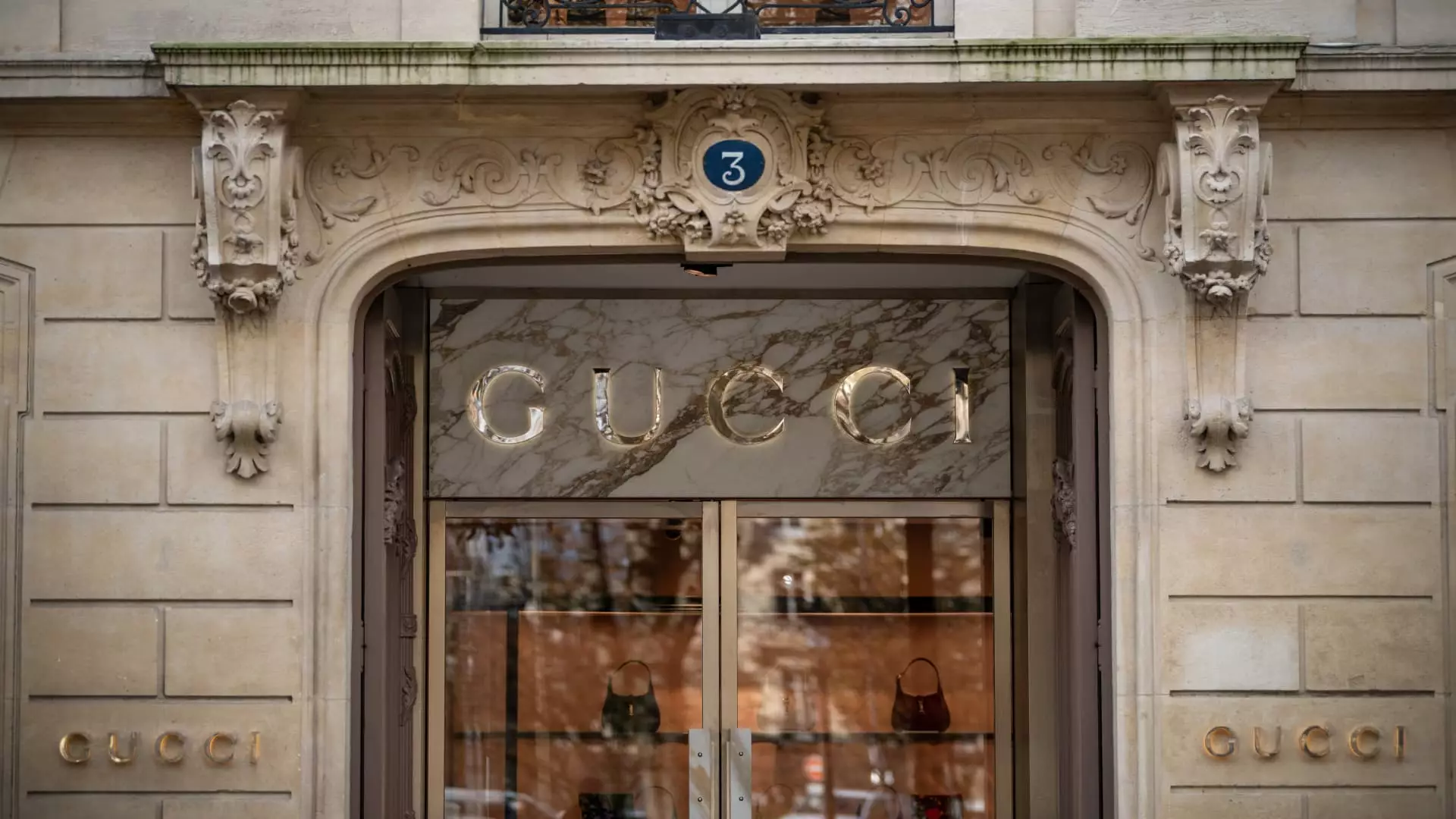In a stark revelation that shook the luxury goods market, Kering, the powerhouse behind renowned brands like Gucci, has witnessed a significant plunge in its first-quarter sales, forecasting further challenges that beg the question: Is this merely a storm in a teacup for luxury or a harbinger of worse to come? With sales dropping by 14% year-on-year to €3.9 billion ($4.4 billion), well below analysts’ expectations of €4.01 billion, Kering’s situation is both alarming and indicative of a larger crisis within the luxury sector.
The Gucci Quandary
At the core of Kering’s setbacks is Gucci, a brand that traditionally accounts for nearly half of the group’s revenue. With an astonishing 25% fall in sales, bringing in just €1.57 billion, Kering’s flagship label is reeling. This decline signals a potential identity crisis rather than mere economic setbacks—Gucci’s designs appear increasingly detached from the evolving tastes of today’s consumers. The announcement of Demna Gvasalia as the new artistic director was anticipated as a bold corrective measure; however, it has instead raised eyebrows given his controversial past associated with Balenciaga’s 2022 ad debacle. Investors seem wary, reflecting that Kering’s desperation may only exacerbate its vulnerability in the already shaken luxury market.
The Broader Impacts
The malaise affecting Kering isn’t an isolated incident. A broader contraction across the luxury market is palpable. News of a 25% downturn in Kering’s Asian sales, coupled with a regrettable 13% decline in both North America and Europe, poses a daunting landscape for high-priced retailers. Even other luxury brands such as LVMH and Richemont are not immune, tracking lower amidst Kering’s fallout. What does this mean for affluent consumers and aspiring luxury brands alike? It’s a troubling sign that even the crème de la crème isn’t shielded from the torrential rain of economic adversity.
Leadership’s Response
François-Henri Pinault, Kering’s Chairman and CEO, acknowledges a “difficult start to the year,” declaring a resolve to navigate the storm with action plans targeting strategic and financial objectives. While affirmations of strength in challenging times may sound reassuring, they also come off as a shaky response to a crisis that seems more chronic than transient. Pinault’s words seem to echo the old adage—repairing the ship while it’s still sailing might not be enough when the waters are murky.
Macro-Economic Ripple Effects
As luxury brands often engage in a delicate dance with economic trends, Kering’s struggle stands out against a backcloth of rising inflation and growing economic uncertainty. Reportedly, analysts predict that the luxury sector, previously thought to be insulated from the harsh realities of tariffs, could be hindered further as customer confidence ebbs away. The expected ease in passing on inflated costs to customers may prove illusory, particularly for companies already grappling with slumping sales like Kering.
Adam Cochrane of Deutsche Bank has illustrated these sentiments in stating, “Weaker global stock markets and the broader economic uncertainty will weigh on confidence and we see this further postponing a recovery in luxury demand.” Though luxury goods are typically associated with high-profit margins, the current environment could compel brands to adopt a more cautious approach to pricing, fundamentally shaking the structure of luxury market dynamics.
The Future of Luxury
Despite the recent optimism at the beginning of the year where some high-end fashion houses reported more promising insights, the current downturn suggests an increasingly volatile market. The clientele of luxury brands, often comprised of the wealthy elite, may find themselves reevaluating luxury purchases amidst broader economic pressures. Kering, with its legacy and brand reputation on the line, faces an uphill battle as it tries to modernize amidst shifting consumer preferences and a challenging economic tapestry.
In the end, it remains vital for luxury brands like Kering to not just rely on their storied past but to forge a proactive and innovative future—one that acknowledges and adapts to the new realities of consumer sentiment, market volatility, and the overarching economic landscape.

